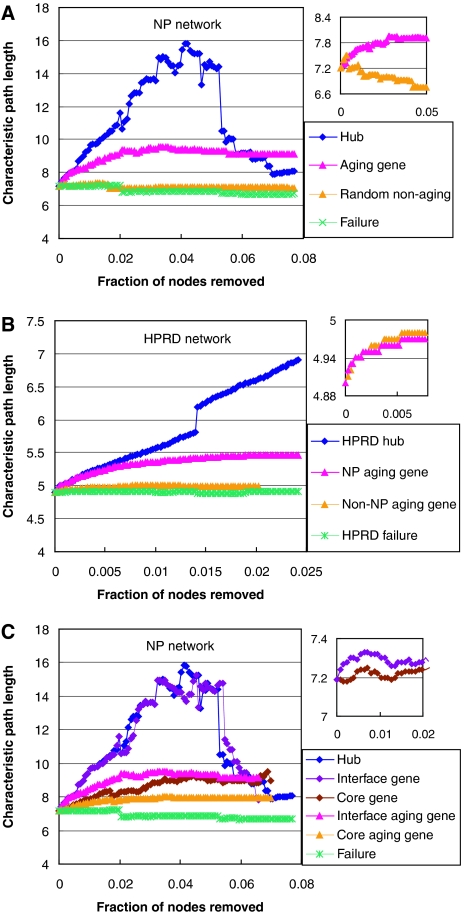Figure 4.
Aging genes and interface genes are important to network stability. (A) Attacking the aging genes in the NP network increases the CPL of the network more rapidly than attacking randomly selected non-aging genes or removal of random nodes (‘failure'), but slower than specific attacks on hubs. Degree-matched attacks on aging and non-aging genes in the NP network are shown in the inset. (B) Attacking aging genes belonging to the NP network increases CPL of the HPRD network more rapidly than attacking aging genes not in the NP network or random removal of genes in the HPRD network. Degree-matched attacks on NP and non-NP aging genes in the HPRD network are shown in the inset. (C) Attacking the aging (or all) genes on the module interfaces increases CPL of the NP network more rapidly than attacking their counterparts in the cores. Degree-matched attacks on the core and interface genes are shown in the inset. Only the first 2% of the attacks are shown in the inset for the interface and core genes, the trend continues for the rest.

